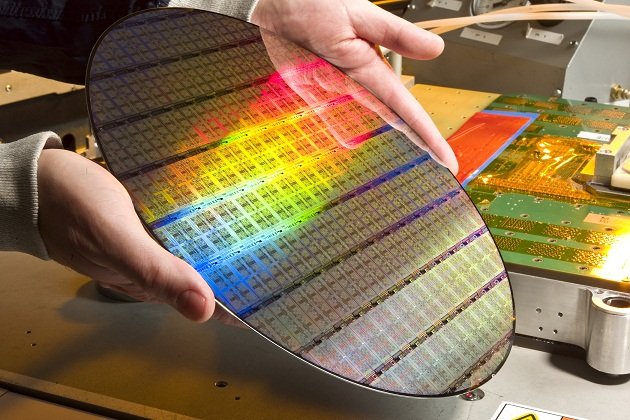Chip production on 300mm wafers will reach a record level in 2025 - and in 2026 China will overtake Taiwan

Crisis in the economy, judging by the forecast of the association of manufacturers of semiconductor components SEMI, will have a minimal impact on the desire of market participants to continue industrial expansion. According to representatives of the association, by 2025, the monthly production volumes of the entire industry will reach a record 9.2 million 300 mm silicon wafers, and the annual growth rate will reach an average of 10%. At the same time, China will overtake Taiwan as early as next year.
Between 2022 and 2025, according to SEMI representatives, 67 new enterprises or production lines for processing 300 mm silicon wafers will be put into operation around the world. The production of power electronics will develop most actively - by an average of 39% per year, the expansion of analog components will be in second place (37%), contract manufacturing will be content with 14% growth per year, optical elements - 7% per year, and memory will be limited to growth no more than 5% per year.
In geographic terms, South Korea will retain the leadership in the number of monthly processed 300 mm silicon wafers, which should reduce its market share from the current 25% to 24% between 2021 and 2025. Taiwan is in second place so far, but during this period its share should decrease from 22 to 21%, and China will take second place next year, which will manage to increase its share from 19 to 23% by the middle of the decade. By that time, 2.3 million 300 mm silicon wafers will be processed monthly in China. This partly explains the concern of the US authorities about the pace of expansion of the Chinese semiconductor industry, which last Friday was expressed in the introduction of large-scale export restrictions.
Tellingly, America in this forecasting interval will increase their share from 8 to 9%, Europe in combination with the countries of the Middle East (mainly Israel) will increase its share from 6 to 7%. Japan, despite the attempts made by the authorities to stimulate the development of the national semiconductor industry, by the middle of this decade will have to reduce its share from 15 to 12%. Against this background, the countries of Southeast Asia will demonstrate stability in the form of maintaining a market share at the level of 5%.







